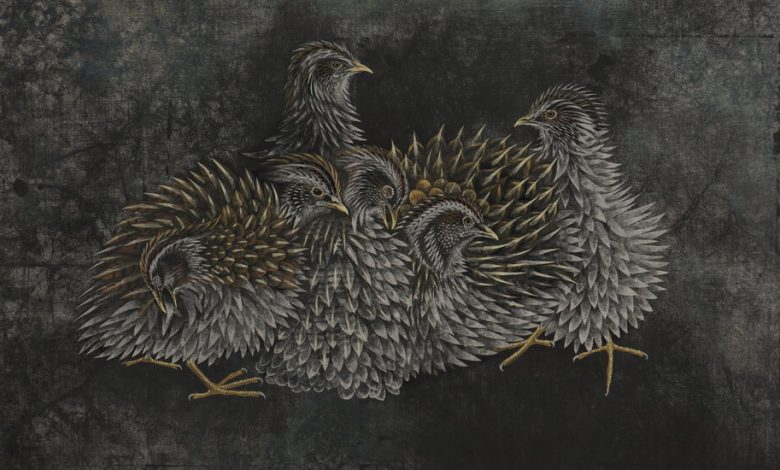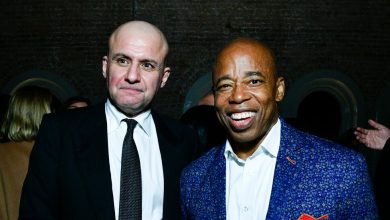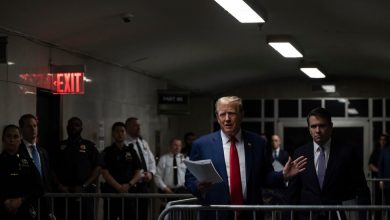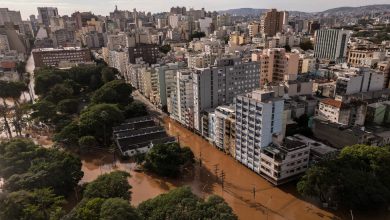A Japanese Gallery Puts a Natural Art Style Front and Center at TEFAF

Japanese art has long been associated with a simple and elegant portrayal of nature. Embodying that approach is the Nihonga movement of the turn of the 20th century, which uses all-natural materials to highlight a deep connection to the planet.
The Shibunkaku gallery in Kyoto has gathered 22 artworks from 13 Japanese artists who flourished in Nihonga for TEFAF Maastricht, which starts next week. The goal is to honor the impact of these artists — all deceased — as well as focus on their renewed relevance in a world whose battles over climate change increasingly embrace the use of natural products.
For Dai Tanaka, 58, the chief executive and director of Shibunkaku, this is a chance for the gallery to help make the world more aware of the Nihonga movement. The term, which means “Japanese paintings,” was used to refer to Japanese art as far back as a thousand years, but was then applied to a specific movement of natural art that evolved around the turn of the last century. Mr. Tanaka sees this rich history as a guidepost for the future of art.
“For us Japanese, nature is something that accompanies human existence, where the gods dwell,” Mr. Tanaka said in a recent video interview. “We are grateful for the changing seasons and the blessings of nature. We believe that these qualities resonate in a deep way with contemporary problems, be it environmental destruction, climate change or the creation of a new sustainable way of life.”
The Nihonga style of painting incorporates mineral pigments, and sometimes ink, with other organic pigments on silk or paper. The term was coined during the Meiji period, roughly 1868 to 1912, to differentiate it from Yoga, or Western-influenced Japanese painting.
More on Japan
- A Corruption Scandal: Japan’s prosecutors accused Dentsu, an advertising company that was one of the driving forces behind the 2020 Tokyo Olympics, of conspiring to evade the public bidding process leading up to the Games.
- A Video-Gaming School: Japan’s first e-sports high school thought it would turn out pro gamers. Instead, it attracted an unexpected demographic: absentee students.
- Economic Growth: After more than two years under some of the world’s tightest border controls, tourist spots in Japan are packed. That has been good for business.
- Yakuza on the Field: As Japan’s iconic gangster group faces a changed world and a waning appeal, a softball team is helping former members build a new life.
Shibunkaku, founded in 1937 in Kyoto, has defined itself for decades as celebrating art from different cultures, eras and genres, with a focus on early modern and modern Japanese fine art, most notably calligraphy and painting. The gallery has been dealing in Nihonga artwork since just after World War II.
The classic Nihonga works traveling to Maastricht are from 13 artists who were born as early as 1873 and who lived as late as 2004. They include “Quails” by Kayama Matazo, “Rice Paddy in Winter” by Ikeda Yoson, “Black Cat” by Kimura Buzan, and “Two Geese” and “Goose and Reeds” by Kawai Gyokudo.
The gallery represented some of these artists during their lifetimes, and all of the paintings have been remounted in the original hanging scroll format in wooden frames.
In addition, the gallery will bring works by Inoue Yuichi; Morita Shiryu, who led a postwar revolutionary movement in Japanese calligraphy; and Lee Ufan, a South Korean abstract painter with a deep connection to Japan.
The idea for this presentation germinated during a small exhibition by Shibunkaku on Nihonga art at the Ogata gallery in Paris in October. The gallery executives then decided that the time was right to bring it to a larger audience.
“In Paris, we were aware of the timely issue of sustainability and the way that we Japanese perceive nature has existed from the beginning as a bond between people that comes from bonding with nature,” Mr. Tanaka said. “Then we realized immediately that now was the time to promote Nihonga to the world.”
This sense of timing is as much about education as it is the immediate impact on the environment, he said. The cornerstone of Nihonga is that no chemicals are used, and the Shibunkaku team felt that once people understood this, it could change art forever.
“We don’t want to say that oil painting is harmful to the world, but we just want to explain that Japanese paintings have been made from nature for centuries,” Mr. Tanaka said. “When a painter wanted white pigment, they crushed a white shell or azurite for blue or malachite for green.”
And the moment to celebrate a more natural approach to art may be now, he said, since the world is more attuned than ever to the impact of synthetic materials.
“What inspired this idea now is that some museums in the world are experiencing things being thrown on paintings to protest the state of the environment,” he said, referring to the recent trend of climate activists defacing art, including a van Gogh painting last year in London. “It feels like these issues are now at the forefront in the art world, which made us think about what we have in Japanese art.”
That urgency, Mr. Tanaka said, has made him aware of how visibility at a global art fair can help reveal the way Nihonga can lead the way toward softening and maybe even shaping the art world of the future.
“With the issues we are facing as a planet, Japanese art can reveal the value in sustainability and the future,” he said. “It’s important to let people know that the philosophy and values and way of thinking we have in Japan are worth telling the world.”




